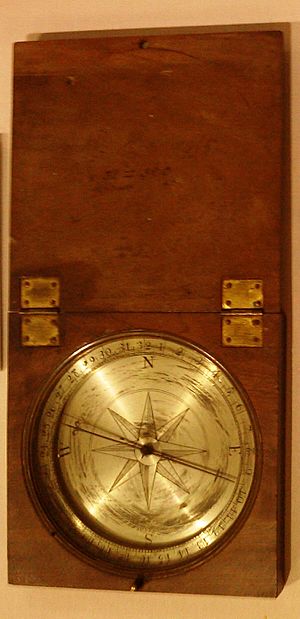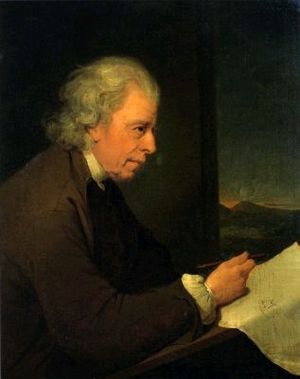John Whitehurst facts for kids
John Whitehurst (born April 10, 1713 – died February 18, 1788) was a clever clockmaker and scientist from Cheshire, England. He was a member of the important Lunar Society, a group of thinkers and inventors. John made big contributions to the study of the Earth, known as geology. He was also a Fellow of the Royal Society.
Contents
A Life of Discovery
John Whitehurst was born in Congleton, Cheshire. His father was also a clockmaker, and he taught John the trade. Even though John didn't have much formal schooling, his father encouraged him to learn all he could. When John was 21, he traveled to Dublin to see a special clock he had heard about. This shows how curious he was!
Starting His Own Business
Around 1736, John started his own business in Derby. He quickly became very busy because he was so good at making things. He built the clock for the town hall and was even made a "burgess" (a special citizen) of the town.
Besides clocks, he also made other scientific tools. These included thermometers and barometers. People in Derbyshire and nearby areas often asked for his help. They needed his skills in mechanics (how things work), pneumatics (air pressure), and hydraulics (water movement).

Moving to London and New Inventions
In 1774, John got a job at the Royal Mint in London. This is where money is made! In 1775, he was chosen to check the weights of gold coins. He moved to London and spent the rest of his life doing scientific work. Other famous scientists would visit his home.
In 1772, when he was 59, John invented something called the "pulsation engine." This device could lift water. It was an early version of what we now call a hydraulic ram.
Studying the Earth
In 1778, John published a book about how the Earth was formed. It was called An Inquiry into the Original State and Formation of the Earth. He started this work while living in Derby. He hoped his research would help people find valuable minerals underground. He worked very hard on this, which sometimes affected his health.
On May 13, 1779, John Whitehurst became a member of the Royal Society. This is a very old and respected group of scientists. In 1783, he traveled to Ireland to study the Giant's Causeway. This is a famous natural rock formation. He wrote about what he saw in a new edition of his book.
Around 1784, he designed a system to improve air circulation at St. Thomas's Hospital. In 1786, he was also chosen to be a member of the American Philosophical Society.
Measuring the Earth
In 1787, a year before he passed away, John published another important book. It was about finding exact ways to measure length, capacity, and weight using time. John wanted to understand the shape of the Earth better. He did this by measuring how pendulums swung in different places.
He measured the length of the pendulum and how fast it swung. He compared his measurements to what he expected if the Earth was a perfect sphere. His work helped scientists learn more about gravity and the true shape of our planet.
Personal Life
On January 9, 1745, John Whitehurst married Elizabeth Gretton. They did not have any children who survived.
John Whitehurst passed away in 1788 at the age of 75. He was buried next to his wife in London. Some people think that John Whitehurst might be the person shown in a famous painting. It's called A Philosopher Lecturing on the Orrery by Joseph Wright of Derby. This painting is now in the Derby Museum and Art Gallery.
See also
- Hydraulic ram
- Pulser pump
- Whitehurst & Son sundial (1812)


